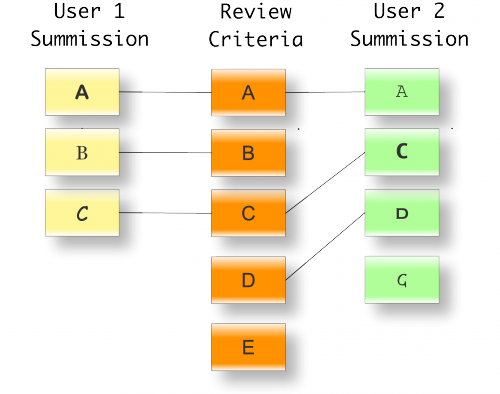What do we mean by an In-Depth Structured Analysis and Assessment?
 |
IntroductionAn in-depth structured analysis and assessment involve several stages with a timeline:
|
For example, assume that a client has a sales pitch and wants three experts to assess it. Each expert will use the same standard set of objective criteria A, B, C, D, and E for sales pitches. Even though each expert uses the same set of objective criteria, but they will assess the sales pitch differently based on their personal knowledge, experience, and worldview.
The following diagram represents the major stages in assessing the pitches and also the assessment criteria for those things that experts will be looking for in any pitch.

- Different fonts for same letter represent different ways of expressing the same thing.
- Assume the Assessment Criteria are the "standard" way of representing these ideas. (What the experts believe need to be in any submission of this type.) Every assessed submission of this type will be judged against these same set of criteria.
- Some submissions contain just some of the required attributes. User 1's submission is missing attributes D and E. User 2's submission is missing attribute E.
- Some submissions contain more than what is expected as standard. User 2 believes that the inclusion of topic G makes their submission better. Both submissions will be judged based on the assessment criteria A-E. User 1's submission would receive a lower score for missing attributes D and E. User 2's submission might be penalized for including G, but it might also increase their score if the advisor felt it added to the value of that type of submission. Attribute G might even be added to the assessment criteria for all future submissions of this type.
When we say that our assessments are structured we mean that the same criteria for the same type of submission is used for all submissions of a given type. In-depth means that the criteria for assessing a submission is not limited and there could be more than criteria A-E. The assessment criteria for certain types of complex submissions could be A-Z.
